Catalpa speciosa
Northern Catalpa
[not native to the Mid-Atlantic area]
[ click on any image below to see larger version ]
Family:
Bignoniaceae
Mid-Atlantic bloom time:
May - June
Mid-Atlantic fruit ripe:
July - August
While native to North America, Northern Catalpa was originally present only west of the Appalachian ridge,
which is why it is listed here as a non-native.
It was widely planted as an ornamental, and has now escaped from cultivation throughout old fields
and disturbed areas throughout the mid-Atlantic region.
Taller and more robust than Southern Catalpa (C. bignoniodes), the bark is thick and usually rough and fissured (Southern is thin and scaly).
The easiest ways to determine the difference between the Northern and Southern Catalpas is either by comparing their bark,
or by crushing a leaf; the Northern is mostly odorless, while the Southern purportedly smells bad.
Northern Catalpa's flowers are large and are reported to be pollinated by large bees and moths.
However, the size of the flower opening and the placement of the anthers and stigma
may point to a larger possible pollinator.
Its seed pods are long and slender (similar to a green been shape), 20-50cm long and 1-1.5cm diameter.
21 May 2019
Manassas National Battlefield Park, Manassas, VA
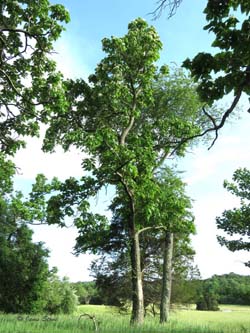
|
21 May 2019
Manassas National Battlefield Park, Manassas, VA
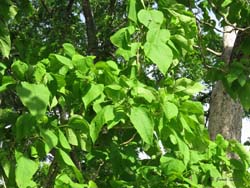
|
20 June 2014
Manassas National Battlefield Park, Manassas, VA
(leaf veins are prominent, almost netted)
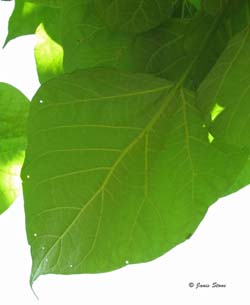
|
21 May 2019
Manassas National Battlefield Park, Manassas, VA
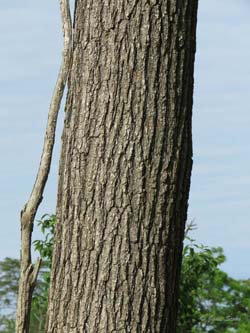
|
21 May 2019
Manassas National Battlefield Park, Manassas, VA
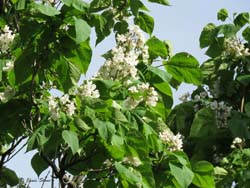
|
27 May 2017
Dumfries, VA
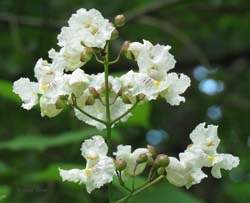
|
27 May 2017
Dumfries, VA
(note anthers and stigma at top of flower opening)
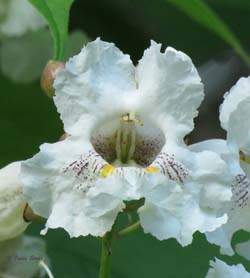
|
21 May 2019
Manassas National Battlefield Park, Manassas, VA
(fallen flower, showing petal coloring)
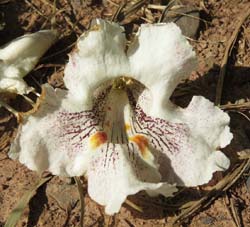
|
Return to list of flora







